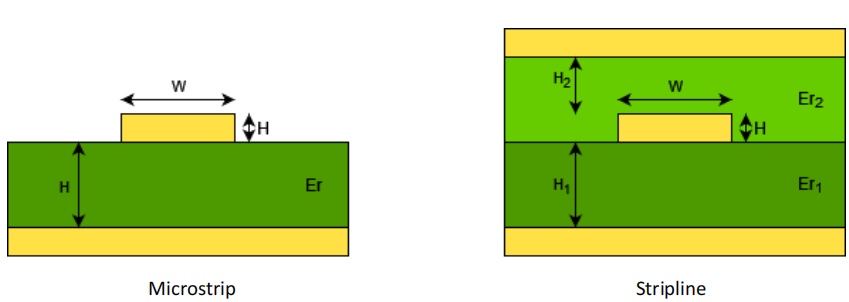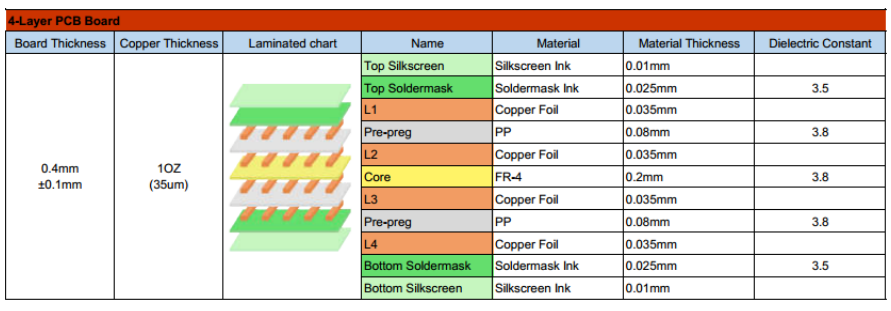
Designing a high-speed PCB can be a rite of passage for many junior-level PCB designers. While intuition and some best practices can make most low-speed PCB’s work just fine, high-speed PCB design relies on impedance control and precise calculations to ensure reliability. The goal of impedance control is to maximize signal power transfer from a driver to receiver, to minimize signal distortion caused by reflections, and to minimize the electromagnetic interference generated by critical signals. The one guiding factor for all things related to impedance control is that as the speed of a signal increases, it starts to behave less and less like a perfect-world model, and more like a transmission line. The burning question in most designers’ heads is, “how important is impedance control in my design?” The answer to which is, as always, it depends.
What defines a high-speed signal and when should impedance control be considered?
Traditionally, signals ranging from 50MHz to 3GHz can be called high-speed, though nowadays signals can far exceed 3GHz. However, just because a signal falls into the category of high-speed doesn’t mean it needs to be impedance controlled. If a trace is “physically short” then the signal may not be that vulnerable to the properties of a transmission line, and therefor does not need to be designed with impedance control in mind. There are two rules of thumb, derived mathematically and simplified for most designers, for determining if a connection is physically short.

If a connection is not physically short, then impedance control must be considered during the overall arrangement process.
What are the dangers of poor impedance control?
By treating a signal as a transmission line, its behavior can be predicted, and proper signal integrity can be achieved with impedance control. If a PCB designer does not include impedance control in their design, issues such as signal reflection, crosstalk, and electromagnetic interference can affect not only the critical signal, but also neighboring elements. These unwanted effects can cause critical high-speed interfaces to have errors or simply not work at all. In some cases, poor impedance control can also cause errors on neighboring traces, or in worst cases even neighboring devices. This is known as radiated emissions, which can also make devices illegal to operate in some regions, underlining the importance of proper impedance control.
What factors are considered for controlling the impedance of a trace?
When designing an impedance-controlled board, a PCB designer must at minimum take into consideration the trace’s height (T) and width (W), the dielectric constant (Er) of the material separating it from its reference plane(s), and the height of the dielectric material(H). In the case of a differential pair signal, the spacing between conductors is also considered. In the two most common cases, traces can either be routed on an outer layer and sitting on a single dielectric layer, or routed on an internal layer where a trace is sandwiched between two dielectrics. The latter case must consider the height of both dielectric layers and their reference planes.

In the case of very sensitive signals, the quality of materials and reliability of the fabrication process also become important factors for an impedance-controlled design.
How should one go about designing an impedance-controlled PCB?
The whole concept of designing a high-speed board can be very intimidating, but it doesn’t need to be. One important thing to understand is that impedance is often defined with a tolerance, so the interfaces have some room for error. A typical target impedance is in the rage of 25 to 125 Ohms with a tolerance of ±10%. Using tools such as online calculators can quickly provide a designer with the correct dimensions of an impedance-controlled trace.
Due to the importance of impedance control, PCB manufacturers will often provide documentation, consultation, and other resources to support a design. For simple impedance-controlled interfaces it may be enough to reference published stack-up tables which will include measurements such as the material height and dielectric constant. Below is an example of PCBgogo’s 4-layer stackup.

For more complex interfaces and faster signals, whose impedance control tolerance is much smaller, consulting your PCB manufacturer is a prerequisite for overall arrangement. A PCB manufacturer can assist a board designer with selecting proper materials, understanding the minimum track size and spacing, as well as selecting advanced technologies to support an impedance-controlled design. A designer can also include fabrication notes for the PCB manufacturer to identify critical traces in case of slight variation in the fabrication process.
What are other key concepts to remember while laying out a controlled impedance design?
1. Keep impedance-controlled traces as short as possible due to transmission line effects.
2. When routing an impedance-controlled trace, be sure that the reference plane underneath has no breaks or discontinuities. The return path should be directly under the critical trace and crossing a break in a reference plane can add unwanted inductance.
3. Try to route an impedance-controlled trace on a single layer. Factors such as changing reference planes mean that return-path vias need to be considered, greatly increasing the complexity of a design.
4. Due to the strict requirements in impedance-controlled PCB design, it is best to lay out the critical traces first and adhere to all their requirements.
5. Always reference part datasheets or interface-specific application notes for overall arrangement recommendations. These documents will often provide the target impedance and even have sample overall arrangements.
Impedance control is very important to PCB design when dealing with high-speed signals. Given the above considerations, a designer should not go about designing an impedance-controlled board blindly.
Always communicate with your PCB fabricator, follow overall arrangement guidelines, and make proper calculations to achieve targeted impedances. For more information on some of the topics discussed in this blog post, check out other articles on PCBgogo.com
- Comments(11)
K****oox
Jun 04.2024, 11:30:33
K****oox
Jun 04.2024, 11:29:55
Kelly K., https://www.carpetcleaningparramatta.com.au/
G****hen
May 26.2024, 21:38:59
Hello. If you are interested in new trends in healthcare and want to learn more about how consumerisation is changing the healthcare industry, you should visit this article https://www.velvetech.com/blog/healthcare-consumerization/, which covers the topic of consumerisation in healthcare in a very accessible and detailed way. I learnt a lot about how patients are becoming more knowledgeable and demanding, and how technology solutions are helping in this process.
Z****son
Apr 27.2024, 19:42:18
V****olt
Jan 29.2024, 17:27:34
F****son
Jan 12.2024, 11:55:19
**
Dec 21.2023, 06:36:59
Your insights always leave me with a new perspective. Thank you! Boy or girl
C****nna
Nov 30.2023, 17:53:49
l****ese
Oct 31.2023, 19:11:49
**
Oct 15.2023, 11:00:11
Impedance control in high-speed PCB design is paramount for maximizing signal integrity and minimizing issues like reflections and electromagnetic interference. As signals behave more like transmission lines at higher speeds, precise impedance calculations become crucial. The importance of impedance control cannot be overstated, especially in complex designs. Additionally, designers should consider tools like Gorebox (PC emulator) to simulate and validate their designs, ensuring optimal performance and reliability in high-speed applications.
